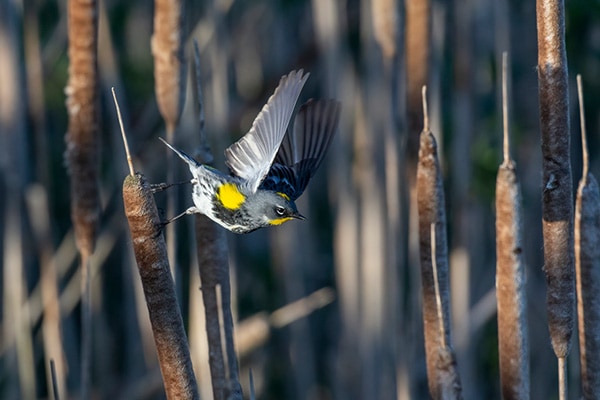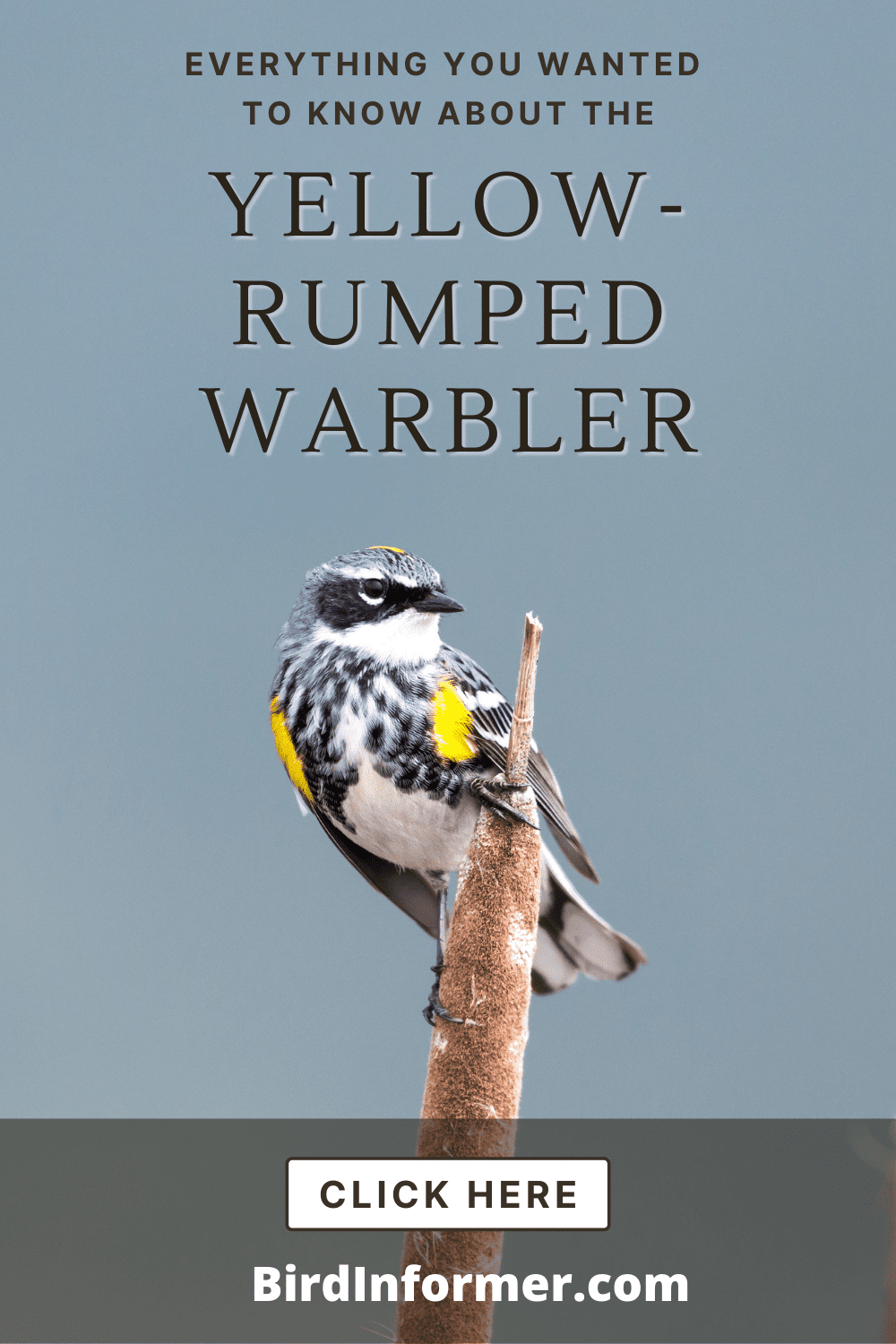Contents
- Yellow-rumped warbler facts
- Yellow-rumped warbler: how-to identify
- Yellow-rumped warbler bird vocalization
- Where You’ll See Yellow-Rumped Warblers
- Yellow-rumped warbler diet
- Yellow-rumped warbler nesting
- Yellow-rumped warbler behavior
- How-to attract yellow-rumped warblers
- Yellow-rumped warbler threats
- Yellow-rumped warbler fun & interesting facts
- Yellow-rumped warbler related species in this family
The Yellow-Rumped Warbler, as the name implies, is a beautiful bird characterized by a yellow rump. They are widespread and found across North America. You’ll have fun seeing them in spring as they perch on trees and sing their songs, so if these birds only visit your place in winter, make sure to travel to see their bright yellow colors.
In this article, we are going to cover a wide variety of topics related to the Yellow-Rumped Warbler, such as:
- How to identify them
- How, when, and where they migrate
- Their diet
- How and where they nest
- And much more…
So, without any more delay…
Let’s jump right into it and learn more about the Yellow-Rumped Warbler.
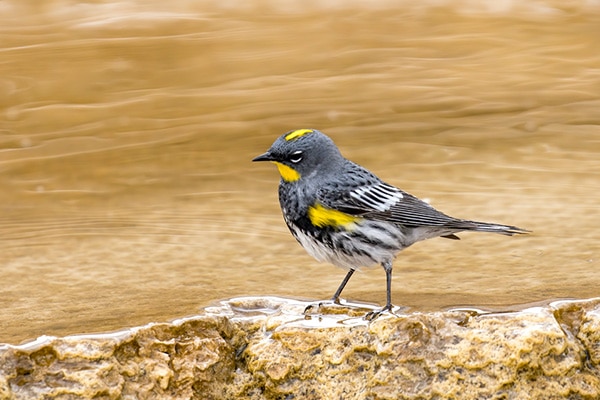
Yellow-rumped warbler facts
- Common Name: Yellow-Rumped Warbler
- Scientific Name: Setophaga coronata
- Scientific Family: Parulidae
- Life Span: 6.6 years
- Size: 4.7 to 5.5 inches
- Wingspan: 7.5 to 9.1 inches
- Weight: 0.4 to 0.5 oz
- Conservation status: Least Concern (LC)
Yellow-rumped warbler: how-to identify
Yellow-rumped Warblers are small birds that feature a thin, pointy, and sturdy bill, a large head, and a long, narrow tail. As their name implies, the birds are mainly characterized by a bright yellow rump. You’ll also observe that they have white spots in their tails.
There are two subspecies: the Myrtle Warbler found in the north and east, and the Audubon’s Warbler found in the West. Myrtle Warblers are identified to have white eyebrows, throat, and side of the neck, while the Audubon’s Warblers have no eyebrows and have yellow throats.
Differences Between Male & Female
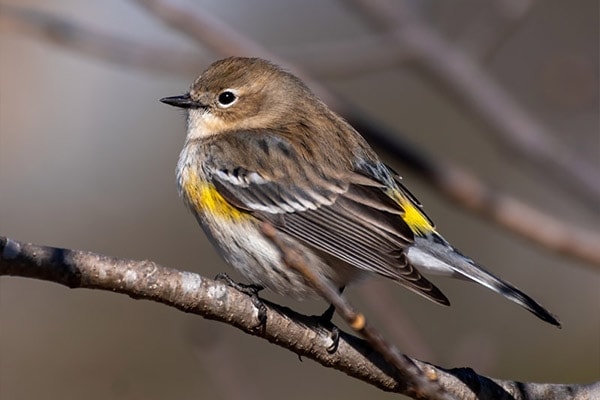
Male and female Yellow-rumped Warblers generally look the same. However, males have more of the bright yellow color in their crown, rump, and sides of their breast. Females are found to be brownish on their upper body and have fewer spots on their tails.
Differences In Summer Plumage vs Winter Plumage
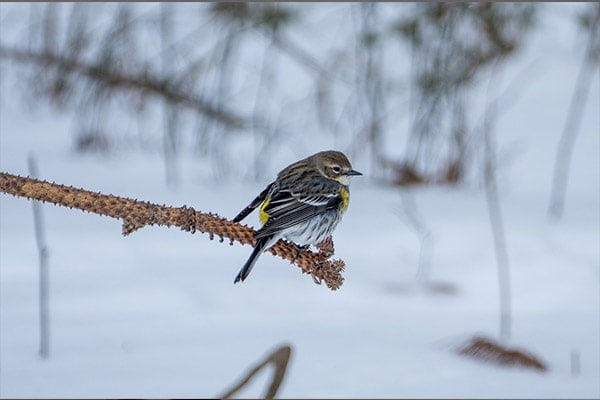
Yellow-rumped Warblers have very striking colors in summer. Although the female birds appear brown, they are still bright. However, in winter, the birds become light brown, pale gray on the chest, and still a yellow rump with yellow sides.
Yellow-rumped warbler bird vocalization
Where You’ll See Yellow-Rumped Warblers
Yellow-rumped Warblers are widespread across North America. The birds are breeding from north of central Alaska, going across Canada. There are some sightings of the birds in the eastern United States. During winter, you’ll see the birds through central America going south to Mexico.
These birds are known to be highly adaptable. You’ll mainly see them in coniferous or deciduous forests, mixed woodlands, pine forests, and forest edges during summer. In winter, birds would prefer to stay in open areas like parks, streamsides, and residential areas with lots of fruit-bearing shrubs and trees scattered.
Yellow-rumped warbler bird migration
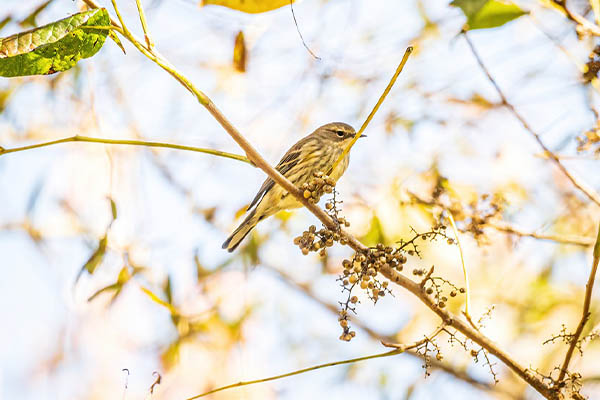
Yellow-rumped Warblers are short or long-distance migratory birds. These birds arrive in their breeding grounds up north late in April. Then, they would migrate in fall, going south for winter around late September to mid-October. Most birds would spend winter on the Pacific Coast, while some would fly further down to Mexico.
Yellow-rumped warbler diet
The Yellow-rumped Warblers’ diet mainly consists of insects, especially in the summer when it’s abundant. They would eat caterpillars, larvae, leaf beetles, ants, and spiders. If there are outbreaks, they would also eat budworms in forests.
These birds would eat fruits and berries in winter, including wax-coated berries like bayberries and wax myrtle. They would also visit bird feeders for more selection of fruits and suet.
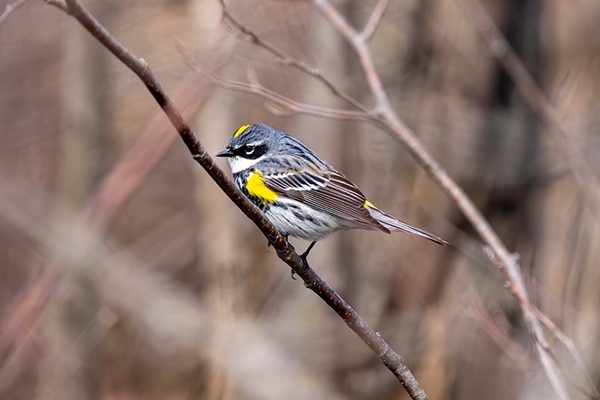
Yellow-rumped warbler nesting
- Clutch Size: 1-6 eggs
- # of Broods: 1-2 broods
- Incubation Period: 12-13 days
- Nestling Period: 10-14 days
- Egg Description: White, speckled with brown, reddish-brown, gray, or purplish gray
Yellow-rumped Warblers would mainly breed on coniferous and deciduous trees. They would build their nests on horizontal branches located 4-50 feet above the ground. Nests may be built close to the trunk or far out the branches.
The female birds are the ones who’d make the nest while the male birds bring the materials. The nest is shaped like a cup made of twigs, bark strips, grasses, pine needles, and rootlets. It is then lined with softer materials like fine hair and feathers.
Yellow-rumped warbler behavior
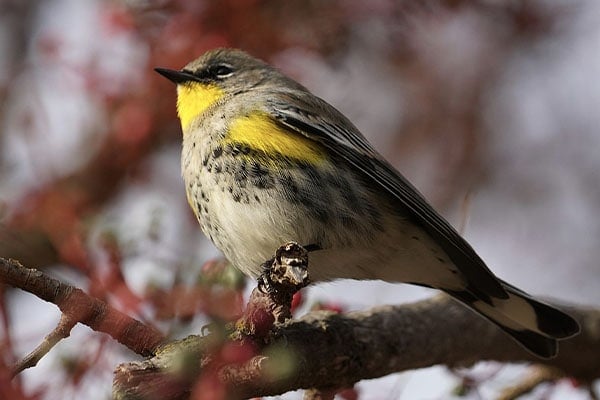
Yellow-rumped Warblers are active birds and spend most of their time foraging. They would usually fly from one tree to another, cling to a bark’s surface, and find hidden insects. Sometimes, they would just perch on a branch and catch flying insects.
These birds travel in flocks and would always appear to be continually moving. Their flying is also described as agile and swift and would sometimes exaggerate how they beat their wings.
Another thing to take note of is that these birds appear to be close to humans. They are frequent visitors of bird feeders and are not easily disturbed by human presence.
How-to attract yellow-rumped warblers
Yellow-rumped Warblers love visiting backyard feeders. So, if you want to see some yellow birds perching in your backyard, it’s easy to attract these birds.
Start with the right food. Hang some bird feeders in your backyard and place some sunflower seeds, raisins, suets, and peanut butter.
If these birds visit your area in the summer, then you should make your backyard insect-friendly by not using pesticides or insecticides. However, if these birds come to your backyard in winter, planting some fruit-bearing trees and shrubs would be the most ideal.
You can also grow some big trees where the birds can nest, and make sure to scatter some nesting materials around your backyard for the birds to find.
Lastly, don’t forget to provide a birdbath so that the birds have something to drink or bathe in.
Yellow-rumped warbler threats
Yellow-rumped Warblers are abundant throughout their range. It’s also believed that they’re the most abundant among warbler species, and the numbers are believed to be increasing. As these birds are migratory, they tend to be killed by outside elements like collisions into man-made structures like radio towers and buildings.
Yellow-rumped warbler fun & interesting facts
- Yellow-rumped Warblers are one of the most common warblers in North America.
- They are the only warblers that can digest wax-coated berries.
- They can digest 80% of wax-coated berries.
- Audubon and Myrtle Warblers were once considered separate species.
- Male Yellow-rumped Warblers search in higher places for food than female birds.
- The oldest recorded Yellow-rumped Warbler was seven years old.
- Ovenbird
- Worm-eating Warbler
- Louisiana Waterthrush
- Northern Waterthrush
- Golden-winged Warbler
- Blue-winged Warbler
- Black-and-white Warbler
- Prothonotary Warbler
- Swainson’s Warbler
- Tennessee Warbler
- Orange-crowned Warbler
- Lucy’s Warbler
- Nashville Warbler
- Virginia’s Warbler
- Connecticut Warbler
- MacGillivray’s Warbler
- Mourning Warbler
- Kentucky Warbler
- Common Yellowthroat
- Hooded Warbler
- American Redstart
- Kirtland’s Warbler
- Cape May Warbler
- Cerulean Warbler
- Northern Parula
- Magnolia Warbler
- Bay-breasted Warbler
- Blackburnian Warbler
- Yellow Warbler
- Chestnut-sided Warbler
- Blackpoll Warbler
- Black-throated Blue Warbler
- Palm Warbler
- Pine Warbler
- Yellow-throated Warbler
- Prairie Warbler
- Grace’s Warbler
- Black-throated Gray Warbler
- Townsend’s Warbler
- Hermit Warbler
- Golden-cheeked Warbler
- Black-throated Green Warbler
- Canada Warbler
- Wilson’s Warbler
- Red-faced Warbler
- Painted Redstart

